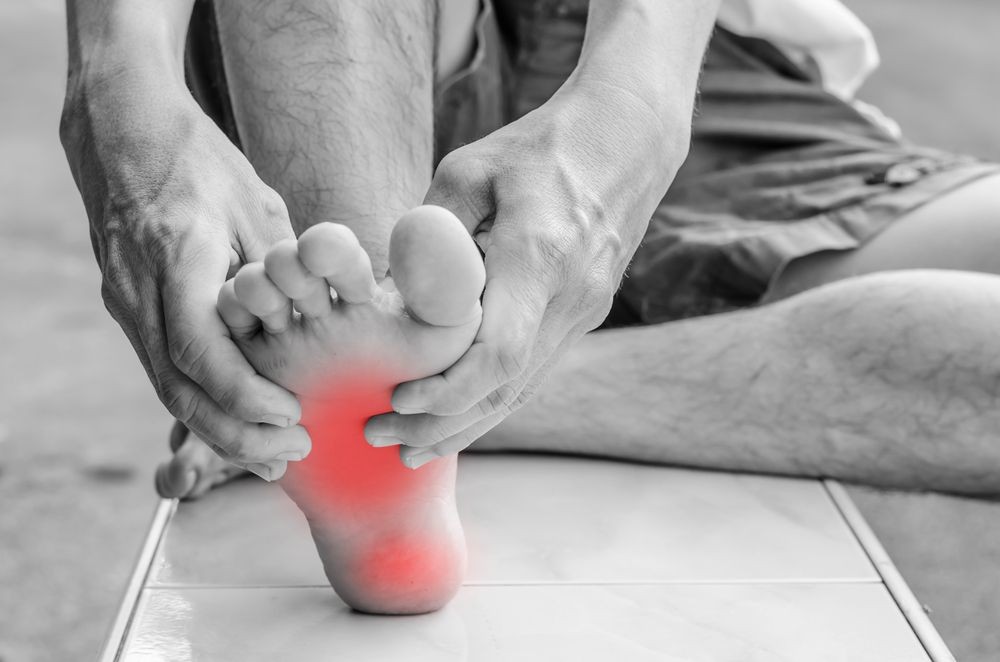Plantar Fasciitis
It’s that time of year again as people are opening up their front doors, dusting off their running shoes and are SPRINGing back into exercise.
When we take considerable time off activity then ramp it right up in preparation for summer we tend to see an increase in the number of setbacks. One of these common ailments is Plantar Fasciitis.
Plantar Fasciitis is a painful condition resulting in symptoms of pain under the heel. It is often caused by overuse of the plantar fascia or arch tendon of the foot.
The Plantar Fascia is a broad, thick band of tissue that runs from under the heel to the front of the foot. Plantar fasciitis was first thought to be an inflammatory condition. The cause of pain and dysfunction is thought to be degeneration of the collagen fibers close to the attachment to the calcaneus.
Symptoms
• Heel pain, under the heel and usually on the inside, at the origin of the attachment of the fascia.
• Pain when pressing on the inside of the heel and sometimes along the arch.
• Pain is usually worse first thing in the morning as the fascia tightens up overnight. After a few minutes, it eases as the foot gets warmed up
• As the condition becomes more severe the pain can get worse throughout the day if activity continues.
• Stretching the plantar fascia may be painful.
• Sometimes there may also be pain along the outside border of the heel. This may occur due to the offloading the painful side of the heel by walking on the outside border of the foot. It may also be associated with the high impact of landing on the outside of the heel if you have high arched feet.
Causes
Plantar fasciitis is common in sports which involve running, dancing or jumping. Runners who over pronate are particularly at risk as the biomechanics of the foot pronating causes additional stretching of the plantar fascia.
Over active or tight calf muscles is another common cause which leads to prolonged pronation of the foot. This, in turn, produces repetitive over-stretching of the plantar fascia leading to possible inflammation and thickening of the tendon. As the fascia thickens it loses flexibility and strength.
Other causes include:
• Low arch or high arched feet (pes planus / cavus) and other biomechanical abnormalities that can occur away from the feet like the hips or knees.
• Excessive walking in footwear which does not provide adequate arch support has been attributed to plantar fasciitis.
• Changing between periods of low activity and high intensity with little progression time as well as the heavily overweight population due to the excess weight impacting on the foot.
• Trail walking/hiking
• AS rheumatoid arthritis
Treatment
• Rest or swapping high impact activities such as running for low impact exercises such as swimming or weight training.
• Myotherapy and Osteopathy appointments for assessment and soft tissue therapy.
• A good plantar fasciitis taping technique can help support the foot relieving pain and helping it rest.
• Apply ice or cold therapy to help reduce pain and inflammation. Rolling off a frozen Golf ball or can of soup over the plantar aspect of the foot.
• Plantar fasciitis exercises, in particular, stretching the plantar fascia is an important part of treatment and prevention. Simply reducing pain and inflammation alone is unlikely to result in long-term recovery. The plantar fascia tightens up making the origin at the heel more susceptible to stress.
• A plantar fasciitis night splint is an excellent product which is worn overnight and gently stretches the calf muscles and plantar fascia preventing it from tightening up overnight.
• Lots of Deep tissue manipulation through the plantar aspect of the foot as well as the back of the leg.
• After reading “The Anatomist’s Corner by Thomas Myers” It’s clear that there is a connection from the front of the hip, thigh, Lower leg as well as the front of the shin and ankle to the plantar aspect of the foot. Therefore, lots of assessment, treatment, and education needs to be provided into the fascial chains and compensatory patterns when you have plantar fasciitis
• Gait and biomechanical analysis
• Dry needling
http://physioworks.com.au/injuries-conditions-1/plantar-fasciitis
http://sma.org.au/resources-advice/injury-fact-sheets/plantar-fasciitis/
Thomas Myers – The Anatomist’s Corner
By accepting you will be accessing a service provided by a third-party external to https://withoutlimitshealth.com.au/



